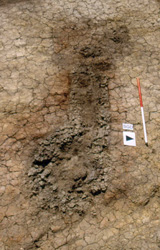Unearthing Medieval technology
During the Middle Ages European iron technology changed from the bloomery technique that had been used since ancient times to blast furnaces, which were more efficient. The result of such a development on European society and economy was dramatic and helped pave the way for the Industrial Revolution. However, some parts of the story explaining how this transition took place are still missing. The Marie Curie fellowship project 'Medieval iron' has attempted to solve this puzzle following excavations at Stanley Grange, Derbyshire – the site of a 13th century iron smelting works. During the Middle Ages a gradual transition took place from direct production of iron in low shaft furnaces, or bloomeries, to iron produced indirectly in blast furnaces. Researchers have conducted scientific analysis and searched historical archives to chart the progress and transfer of iron smelting across Medieval Europe. At the Stanley Grange site archaeologists have unearthed the remains of at least eight furnaces together with large quantities of slag from the iron production process. Detailed examination of the slag has been carried out using scientific analysis and the examination of historical records. The initiative has helped train researchers in Medieval iron technology and to interpret this evidence in its full technological and historical context. This represents a valuable contribution to developing new European expertise and excellence in these fields.







